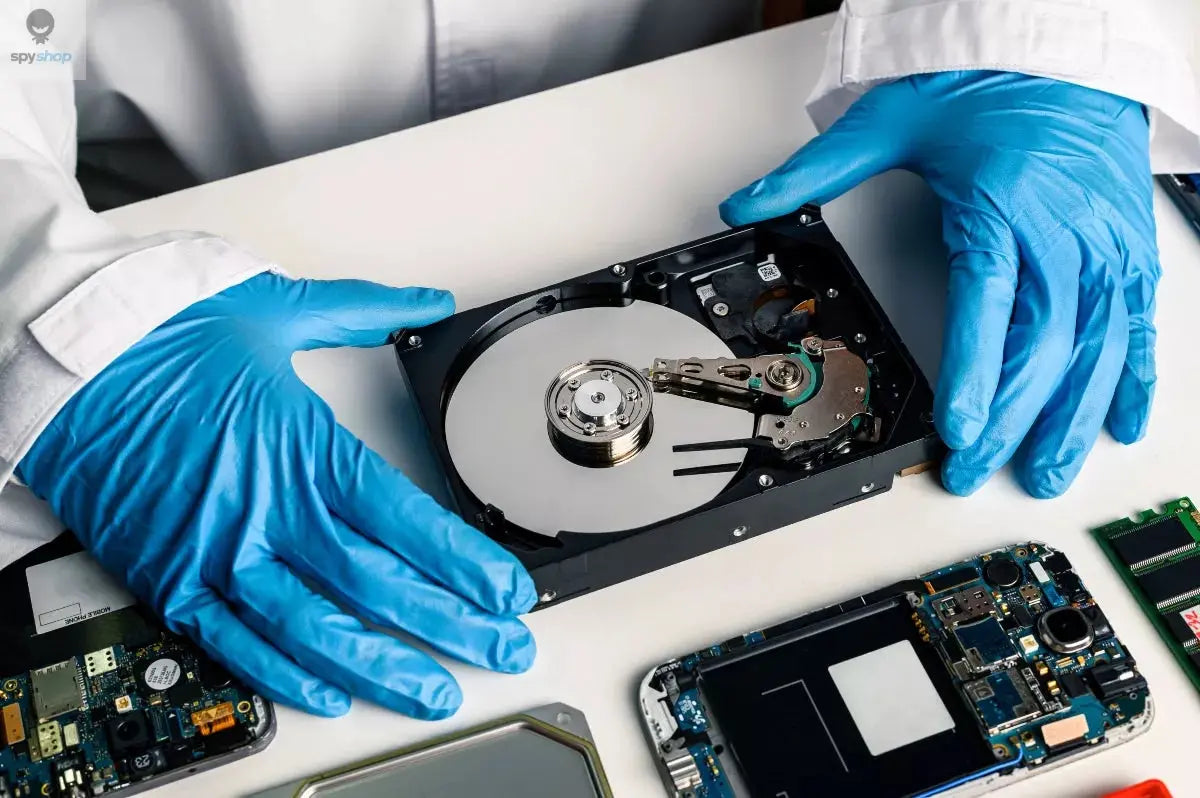
Advanced Tools and Techniques for Recovering Deleted Data Recovery #TechTools
Advanced Tools and Techniques for Data Recovery
Data recovery loss can strike when we least expect it, leaving us scrambling to recover important files, sentimental photos, or critical documents. Whether you are a student, a professional, or a casual user, losing data due to hardware failure, accidental deletion, or malware can be stressful and overwhelming. Thankfully, with the right tools and methods, recovering deleted data is often possible. This comprehensive guide explores the best tools and strategies to recover lost data, empowering you to restore what matters most.
Understanding the Causes of Data Loss #ComputerSafety
Data loss can occur for a variety of reasons. Here are the most common scenarios:
-
Accidental Deletion: Files are mistakenly deleted, often without realizing their importance until it’s too late.
-
Hardware Damage: Physical damage to a laptop, hard drive, or smartphone can render data inaccessible.
-
System Crashes: Operating system failures or software glitches can lead to corrupted or lost data.
-
Malware and Viruses: Malicious programs can delete or corrupt files, leaving you scrambling for recovery solutions.
-
Human Error: Formatting drives or emptying the recycle bin without checking its contents can lead to unnecessary data loss.
Essential Tools for Data Recovery #RecoveryMadeEasy
Data Recovery USB Sticks
A data recovery USB stick is one of the most straightforward and effective tools for retrieving lost files. Here’s why these devices are indispensable:
-
Ease of Use: Recovery USBs require no complicated setup or software installation. Simply plug the stick into your computer, and it begins recovering your data.
-
Versatility: These devices can recover photos, videos, documents, and other types of media, addressing a wide range of data loss scenarios.
-
Unlimited Use: Once purchased, a recovery USB stick offers unlimited use, making it a cost-effective investment.
-
Tracking Deleted Data: Recovery sticks can retrieve files emptied from the recycle bin, ensuring you have access to deleted documents you thought were gone forever.
iPhone/iPad Forensic Recovery Tools
Smartphones are central to our lives, storing everything from personal photos to sensitive financial information. Losing smartphone data can be particularly distressing, but forensic recovery tools provide a solution:
-
Comprehensive Recovery: Retrieve photos, emails, text messages, and other data from your iPhone or iPad.
-
User-Friendly Software: Installed on your computer, forensic recovery software is designed for ease of use, allowing you to recover lost data with just a few clicks.
-
Speed and Efficiency: Most forensic recovery processes are completed in under 20 minutes, saving time and minimizing disruption.
-
Integration with iCloud and iTunes: These tools can work alongside iCloud and iTunes for a deeper level of recovery, ensuring even hard-to-reach data is restored.
Professional-Grade Software for Deep Recovery
For advanced users and IT professionals, specialized recovery software provides powerful tools for addressing complex data loss issues:
-
Disk Recovery Tools: These programs scan entire drives to recover deleted partitions and corrupted files.
-
Cloud-Based Recovery: Access cloud backups to retrieve files lost on local systems.
-
Lifetime Licenses: Many recovery software options come with lifetime licenses, ensuring ongoing support for future data loss incidents.
Best Practices for Preventing Data Loss #ProactiveProtection
-
Backup Regularly
-
Use external drives, cloud services, or NAS systems to create regular backups of important files. Automated backup solutions can save time and ensure consistency.
-
-
Invest in Reliable Hardware
-
High-quality hard drives, SSDs, and storage devices are less likely to fail, reducing the risk of data loss.
-
-
Use Antivirus Software
-
Protect your system from malware and viruses with reputable antivirus programs.
-
-
Avoid Overwriting Data
-
If you’ve lost data, stop using the affected device immediately to prevent overwriting the deleted files.
-
-
Enable File Recovery Options
-
Many operating systems and software programs offer built-in recovery options. Familiarize yourself with these features to streamline the recovery process.
-
Conclusion: Restoring Peace of Mind Data Recovery
Data loss doesn’t have to be permanent. By using the right tools—from recovery USB sticks to forensic smartphone software—and adopting proactive measures, you can effectively safeguard and restore your valuable information. Whether you’re dealing with accidental deletion, hardware failure, or malware, these solutions ensure that help is always within reach. Start exploring these tools today to take control of your digital life and protect your data for the future.
Understanding Data Recovery Tools
Data recovery tools are essential for retrieving lost or deleted files. These tools work by scanning the storage device for remnants of deleted files and recovering them. However, the effectiveness of these tools depends on various factors, such as how much time has passed since deletion and whether the data has been overwritten. So, whether you're a novice or an expert, understanding these tools can help you choose the right one for your needs.
Techniques for Successful Data Recovery
There are several techniques to enhance the success of data recovery. For example, using professional data recovery software can significantly increase your chances. Additionally, you should immediately stop using the device to avoid overwriting deleted files. Nevertheless, some techniques require advanced knowledge of file systems, so consulting a professional may be necessary if basic methods fail.
Best Practices for Preventing Data Loss
Preventing data loss is just as important as recovery. Regularly backing up your files can save you a lot of trouble in case of deletion. Besides, cloud storage solutions offer an excellent way to keep your data safe, so you never have to worry about losing it permanently. Therefore, establishing a solid backup routine can protect you from unexpected data loss in the future.


